Marissa Buchanan writes about the importance of genetic diversity for worldwide food security and how she practices breed conservation with her own flocks.
Conservation and Genetic Diversity
“Conservation” and “poultry” are two words that aren’t always put together by backyard poultry owners. More often, we use words like “rare” or “heritage” to describe breeds that are at risk for extinction. But it’s important to recognize that such breeds as Crèvecoueurs, Nankin bantams, and Campines are so close to extinction that they require human intervention to keep their genetics alive at all.

Campine hen from Warwickshire, England. “Conservation” is the process of carefully and consciously maintaining both visual characteristics (feather patterns or egg colors) and genetically desirable traits (disease resistance) through selective breeding. Getty Images
Genetic Diversity
Existing poultry breeds are all the product of selective breeding, some over the course of hundreds of years. Maintaining these breeds is important in order to keep their distinctive genetic traits in play. For instance, a breed that is resistant to worms, such as Leghorns, carries genes that can be bred into other breeds while maintaining the special visual characteristics distinctive to each.
Genetic diversity limits the ill effects of inbreeding, which can rapidly produce birth defects in both industrial and non-industrial flocks. Poultry are quite good at adapting to environmental changes and genetic diversity helps multiple breeds maintain that ability.
Why Conserving Diversity Matters
Traits that are often part of a conservation program include growth rate, meat taste, disease and parasite resistance, free-ranging capabilities, fertility, longevity, mothering and brooding ability, and predator awareness.
I raise a number of poultry breeds that are allowed to free-range, in large part because they are breeds, such as Sebrights, that are very aware of predators. I still lose some birds, but fewer than I would with a breed that had been bred primarily for docility or meat-production. My Sebrights are also good foragers who aren’t totally dependent on me for their food. This means that their diets are more varied (which is good for them) and I save on feed costs (which is good for me).
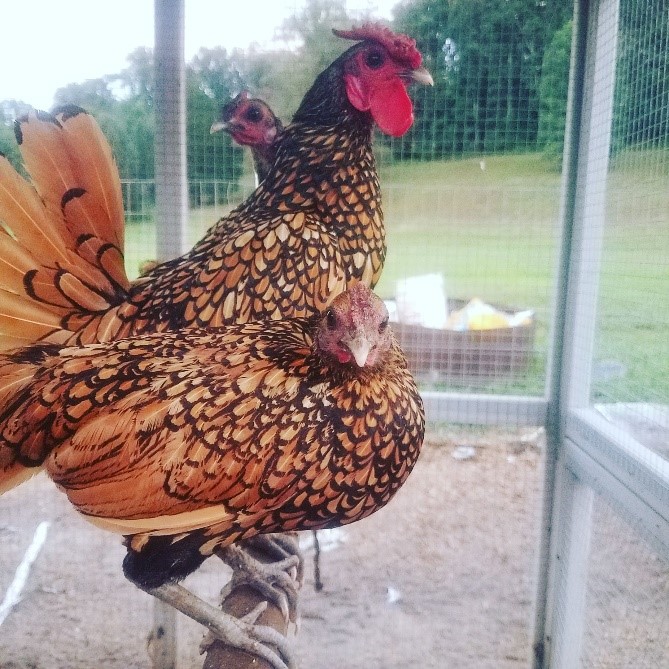
Golden-laced Sebrights. Yes, they are looking at YOU. Photo by author.
I am practicing genetic diversity on my farm, but we must also require the same from industrial poultry production. Typically, industrial farms consist of single breeds being used for single purposes: Anconas, Leghorns, and Minorcas are used for egg laying ,while Cornish Crosses and Plymouth Rocks are used as meat birds. Highest yield tends to be the priority for today’s agribusiness, rather than adaptability. But there are risks associated with large monocultures, such as diseases affecting large numbers of birds despite biosecurity measures. Genetic diversity is insurance to protect our food security.
Pre-Modern and Modern Attitudes Toward Selective Breeding
Before modern farming, animals were often bred to adapt to the local conditions of the farmer’s geographical location. Now industrial farming has shifted to a model that focuses solely on high yield. This is not the farmer’s fault. Such decisions are driven by increasing worldwide population and need for rapid food production. Unfortunately, this means that the once-popular breeds of the past are disappearing, and their genetic diversity is dying with them. In the past, many birds were kept for only ornamental and show purposes.
How We Moved from Farm Chicken to Industrial Broiler
Prior to the 1900s, most families kept a dual-purpose bird that produced eggs and would later be used for food. Family favorites included the Buckeye and the pre-industrial Rhode Island Red. Chicken consumption was seasonal, based on a spring hatching season. Young cockerels were eaten in late spring or early summer. Fried chicken was a favorite July 4th picnic food as that’s when the birds were ready to eat.
In the 1920s, Celia Steele (often credited with starting the industrial broiler business) began to raise chickens specifically for meat. She started with a flock of 500 and sold 387 two-pound chickens for 67 cents a pound. By 1926, she was raising 10,000 chickens strictly for meat sales.
Industrial chicken operations began to pop up in the U.S. in the 1940s, taking advantage of both newly developed methods of assembly-line processing, but also existing refrigeration for storage and transport. Commercial broilers surpassed farm-raised chickens as the number-one source of chicken meat in 1952. Families no longer needed to keep a flock on hand as eggs and broilers were readily available in grocery stores for fairly reasonable prices, and chicken dishes could be eaten year-round. This also meant that the genetic diversity inherent in the farm-raised chicken system was at risk. The U.S. poultry industry concentrated on raising a few select breeds, and most industrial broiler operations have only one type of bird.
Some breeds now have distinctions between the birds bred in industrial operations and those bred by small farmers or urban chicken owners. For instance, the Rhode Island Red was industrialized for maximum egg production. The industrial Rhode Island Reds lost their deep-red feathers, and they don’t dress out well. The non-industrial Rhode Island Red has a rich plume of dark feathers, and can also be used for meat. The non-industrial breeds are now referred to as “heritage breeds,” and many are in danger of extinction.

Young Rhode Island Red hen. Getty images.
The Buckeye was almost lost completely until The Livestock Conservancy put together a special project for them, named “The Buckeye Recovery Project,” which moved them from the “critical” population list up to the “threatened” list. Rhode Island Reds and Buckeyes are two breeds that were once well-known to most families. Now, like less well-known breeds, they are at risk of extinction.
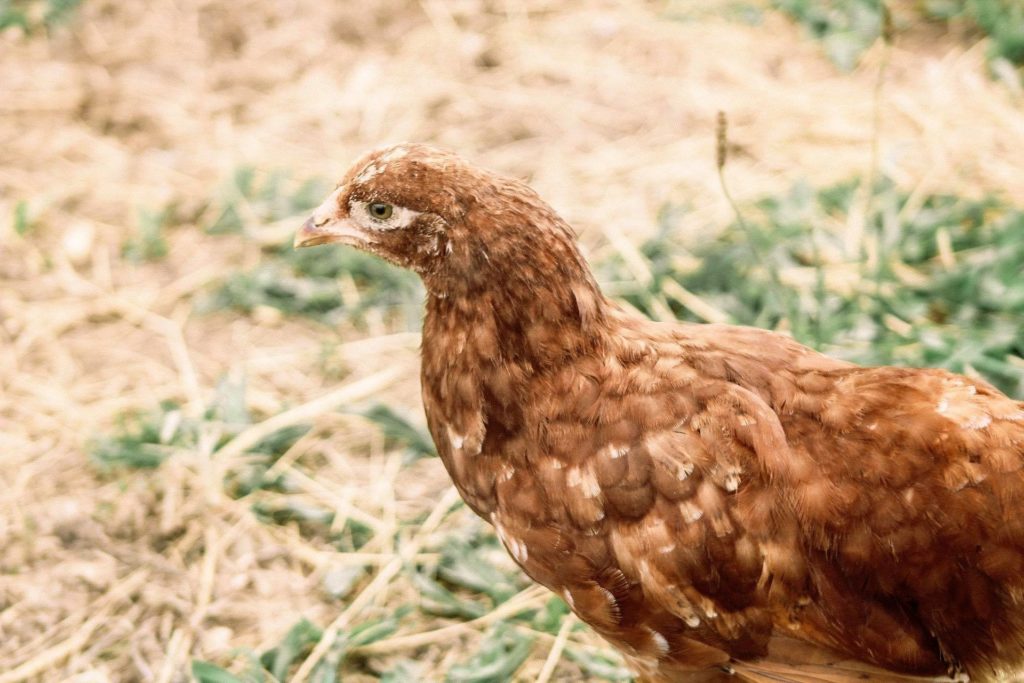
Buckeye hen. Photo by author.
Genetic Diversity as Insurance
If today’s agricultural industry had a catastrophic loss of animals nationwide, we would absolutely have to have a “genetic library” of breeds to replace that loss. Industrial breeds are largely dependent on humans to survive, in large part because broilers don’t need to live very long. Heritage breeds still contain a wide array of genetic characteristics designed to help them survive in different environments and again different threats. Maintaining that genetic diversity ensures that various traits can still be bred into industrial birds, and helps to ensure that nationwide food sources are at less risk of catastrophic loss.
A good example of this would be the avian influenza A viruses. Wild birds can carry this disease and rarely get sick, but if it’s transmitted to domesticated species, it can spread rapidly and disastrously. In the 2014-2015 outbreak of HPAI (highly pathogenic avian influenza), the USDA estimates that a total of more than 50 million chickens and turkeys died or had to be culled. More than 3 billion dollars were lost in both domestic and international markets. While domestic production bounced back fairly quickly, exports remained low for much longer due to lost consumer confidence. This was the worst disease-related disaster to hit U.S. industrial bird production yet, and part of what put the industry at higher risk was the lack of genetic diversity among their flocks.
Not only does the poultry industry need to invest in and maintain more genetic diversity, small poultry owners can help significantly by raising diverse flocks. This deepens the genetic library nationwide and, besides, it’s fun to have a lot of different chickens running around your yard.
Personal Choices
I personally own Sebrights as part of my contribution to poultry conservation and genetic diversity. Sebrights are a true bantam breed, meaning that no “big” version of them exists. They were developed in the early 1800s by British chicken enthusiast Sir John Sebright, who probably crossed the Nankin with Polish breeds to create a bird with boldly laced plumage.
They are stunning birds who rarely brood their own eggs and are not known for their egg-laying skills. If you want to raise them, you’ll need to incubate the eggs with an incubator and then keep the chicks in a brooder before putting them in with your flock.
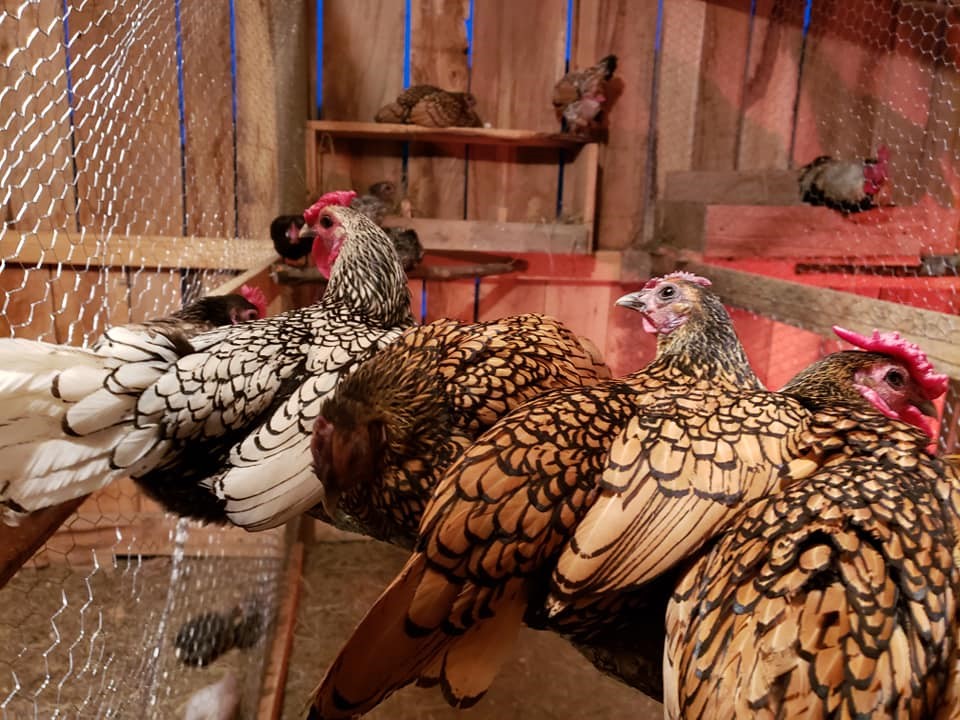
Silver- and gold-laced Sebright chickens. Photo by author.
Another breed that I’m interested in conserving is the Cayuga duck. There are several different stories about the origins of this breed, but we do know that they were accepted into the American Poultry Association’s Standard of Perfection in 1874. Cayugas were primarily raised as meat birds until the Pekin duck gained greater popularly in the late nineteenth century. Today, they’re raised as dual-purpose birds.
These stocky, hardy ducks are all-black and lay black eggs at the beginning of their laying season. The eggs fade to cream and are white by the end of the laying season. Cayuga ducks are active foragers and good mothers.
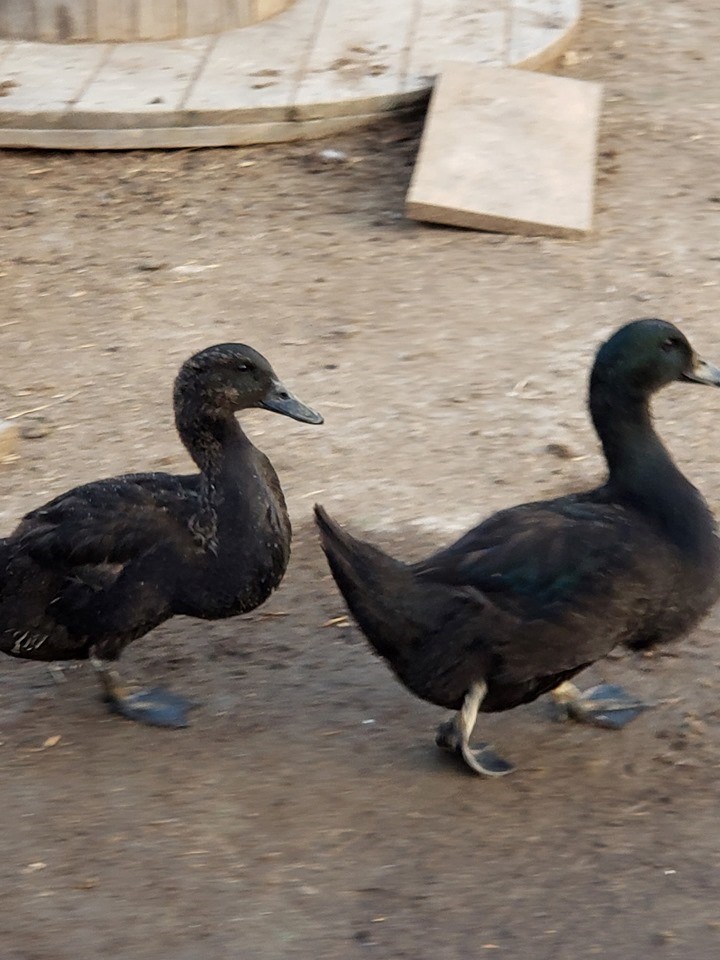
All-black Cayuga ducks. Photo by author.
Livestock Conservancy as Resource
While poultry is the main focus here, genetic diversity and conservation are important for all livestock animals, such as sheep, cattle, pigs, and goats: Animals that, when raised industrially, are selectively bred for high yield and monoculture raising. Their genetic libraries also need protecting.
The Livestock Conservancy was founded in 1977 to educate about and protect diversity in animal breeds. This organization is dedicated to studying the 17 percent of livestock breeds that are struggling right now and helping farmers and consumers learn more about them. Heritage Breeds Week is an annual event that takes place the third week in May, providing community outreach and workshops to help small farmers and urban homesteaders learn more about the importance and practice of genetic diversity and breed conservation.

Dexter cow. Photo courtesy of Freedom Farms.
How Can You Help
If you’d like to start a flock, or add to an existing flock, begin by meeting local breeders and finding out about their flocks. Many urban poultry owners are chiefly interested in raising egg chicken breeds for home egg consumption. However, you can also consider raising meat chickens to help with keeping those breeds around. If you aren’t interested in consuming them, you may be able to sell the birds back to a local breeder.
If you aren’t looking to add to your current flock, you can still support other local heritage flocks by buying local. Plan some egg-heavy dishes or meals and buy any extra eggs you need from the local farmer’s market. Or buy turkey from a local breeder. Who says you have to wait for a holiday?
Whether you’re raising birds for eggs, meat, or as pets, there are many things you can do to help promote and maintain needed genetic diversity.
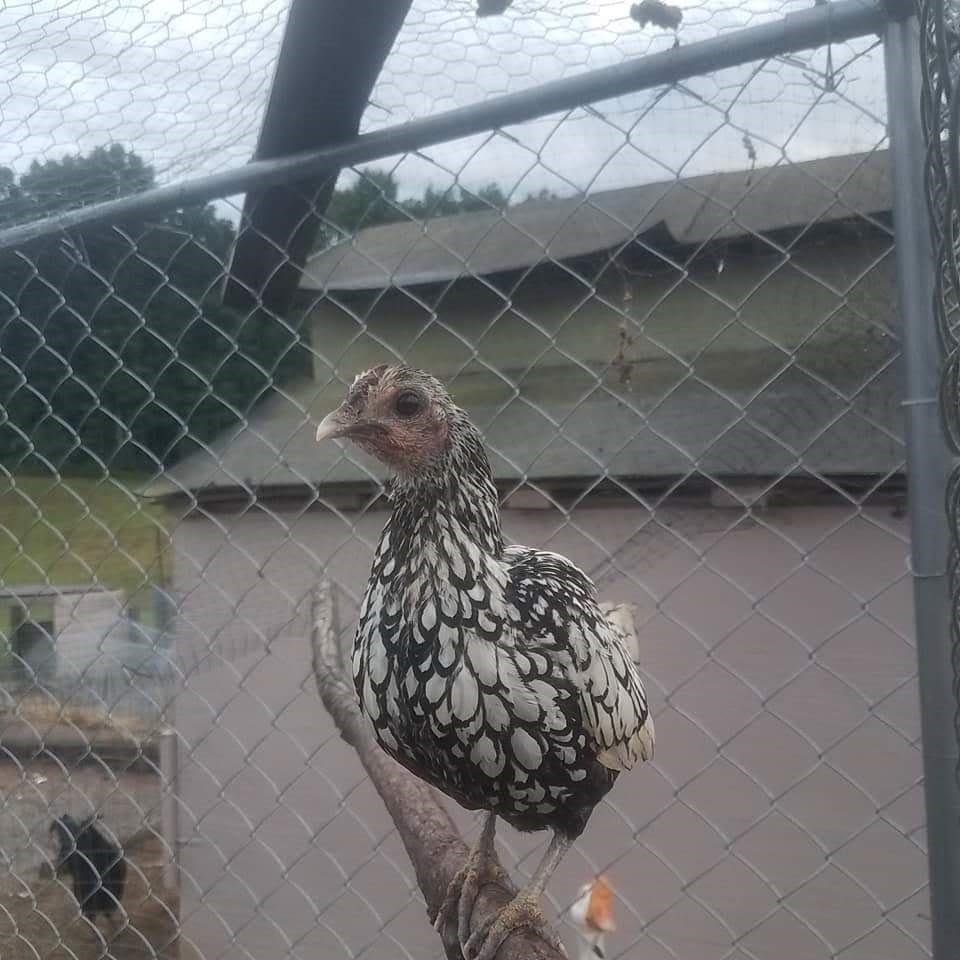
Young silver Sebright hen. Photo by author.
Marissa Buchannan grew up an active member of Future Farmers of America. She was raised on a cow farm and has experience with gardening, poultry conservation, animal-assisted therapy, and gardening therapy, and hosts the Heritage Breeds Festival in Riceville, TN, biannually. She served in the Tennessee National Guard for 10 years as a combat medic and received her Bachelor’s degree in Health Care Administration. Marissa is currently the owner of Buchanan’s Barnyard, a mini-pig rescue and poultry conservation farm. She is a mom to two toddlers and is married to her high school sweetheart.












